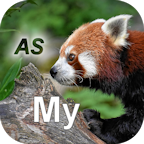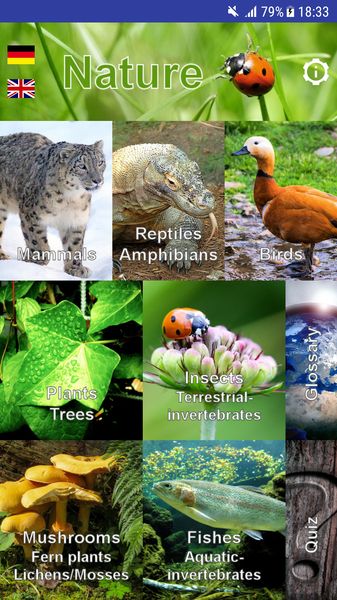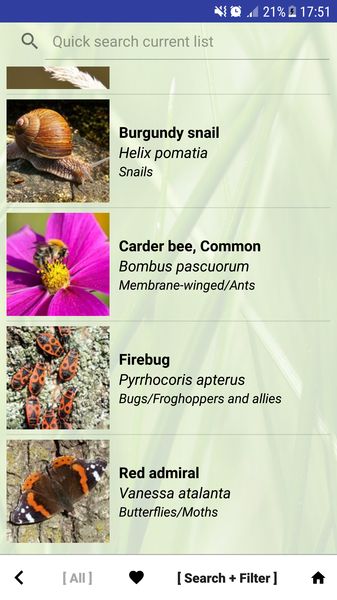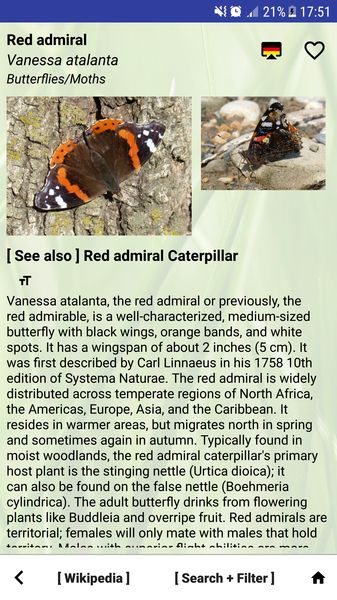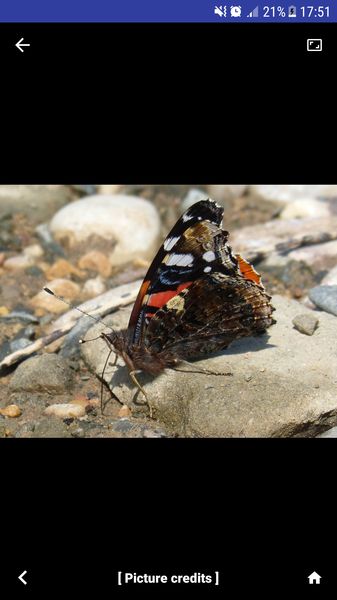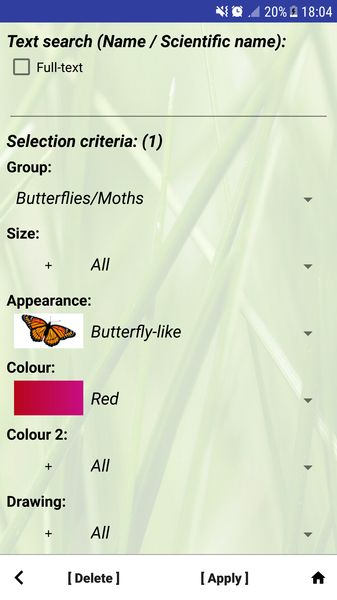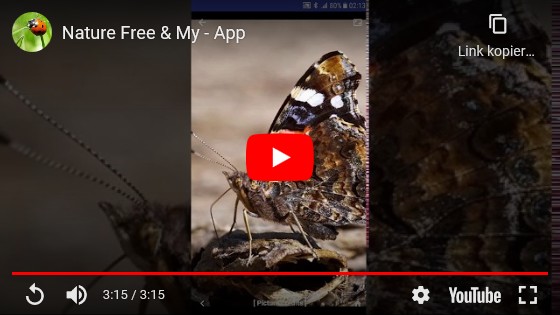Nature App - Asia
An offline nature guide in English, German, French, Italian and Spanish.
The app allows identification by characteristics and contains information on all areas of flora and fauna. All important functions can be used offline. For use on the move in nature.
Free Version:
Nature Free - Asia
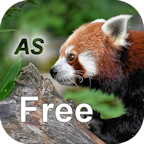
Discover and experience more than 1300 plant and animal species of Asia with more than 2100 images and 170 animal voices.
Google Play and the Google Play logo are trademarks of Google LLC.
Info:
Identify and recognise flowers, trees and shrubs. Fungi, ferns, lichens and mosses. Mammals, birds and insects. Reptiles and amphibians. Fishes and invertebrates.
The free version offers the same features as the full version, but contains fewer species.
The app does not claim to be scientifically correct or complete and may not be used for identification between poisonous and edible respectively dangerous or non-dangerous species (See terms of use). Images and texts come from free sources (See copyrights and license terms). The use of the app is possible without providing personal data and permissions are limited to a necessary minimum (See privacy policy).
Feedback, error messages or suggestions for improvement are welcome.
Help:
Identification
The identification is made via the
images of the species lists which you can restrict using the "Search
+ Filter" function.
Quick Search
Text search by name, scientific name and
group in the currently displayed list.
[ Search + Filter ]
Use only a part of composite names for the text search, since there
are often different spellings.
Do not use too many criteria together, which often produces unusable
results. Choose only a few clear criteria that you can extend step
by step if necessary. Also try to change your defined criteria, as
these are not always clear. For example, colour, shape and drawing
can vary or the classification can be subjective. You can report us
wrongly classified criteria via "Improve entry".
The
leaf-arrangement and leaf-shape usually refers to the upper leaves.
Unless there are only basal leaves. With pinnated leaves, it is not
the leaflets that are decisive, but always the whole leaves.
With many small, densely arranged individual flowers you should
also look under panicles or ears-like and vice versa when large
flowers are in panicles etc.
The size refers to the maximum
achievable size of a species. Individuals can also be smaller. This
should be taken into account when searching for size.
When using the search filters for fruits, traces, clutches, larvae
and caterpillars, please note that all other search criteria refer
to the adult form or the plant itself.
![]()
![]()
Species can be temporarily marked for later research or as favorites
using the heart symbol on the detailed description. These lists can
be lost when you update or delete the application data.
![]()
The warning symbol only indicates you to check this species for
possible dangers in the description and other technical literature. A missing
warning symbol does not indicate that a species is edible or
harmless.
![]()
The red area in the map shows on which continent a species occurs.
The occurrence can also be endemic in a small region of the
continent. Since many species have been introduced worldwide and are
invasive, they can also occur outside the marked region and their
original range.
![]()
Available animal voices can be played via the sound symbol. If
necessary, increase the volume for media.
Enlargement
Select an image for full screen view.
![]()
Select the text size symbol to enlarge the text.
[ Improve entry ]
You will be redirected to our website
where you can report mistakes or available content and make suggestions for corrections.
You can also suggest species for inclusion by entering its name.
They will probably only be provided in the extended paid version. It
is not necessary to provide personal data.
![]()
![]()
The language icons on the main page can be used to define the
preferred language of the app if this differs from the settings of
your device.
![]()
![]()
Language of the data contents can be changed temporarily via the
language symbol of the detailed description.
![]()
In the settings under (Info) you can delete favorite lists and
change the second language.
![]()
![]()
Troubleshooting
In case of problems, you can delete the
data of this application in the device settings or uninstall it
completely and then reinstall it. This reloads the database and, if
necessary, downloads media files. This operation deletes all saved
favorites.




